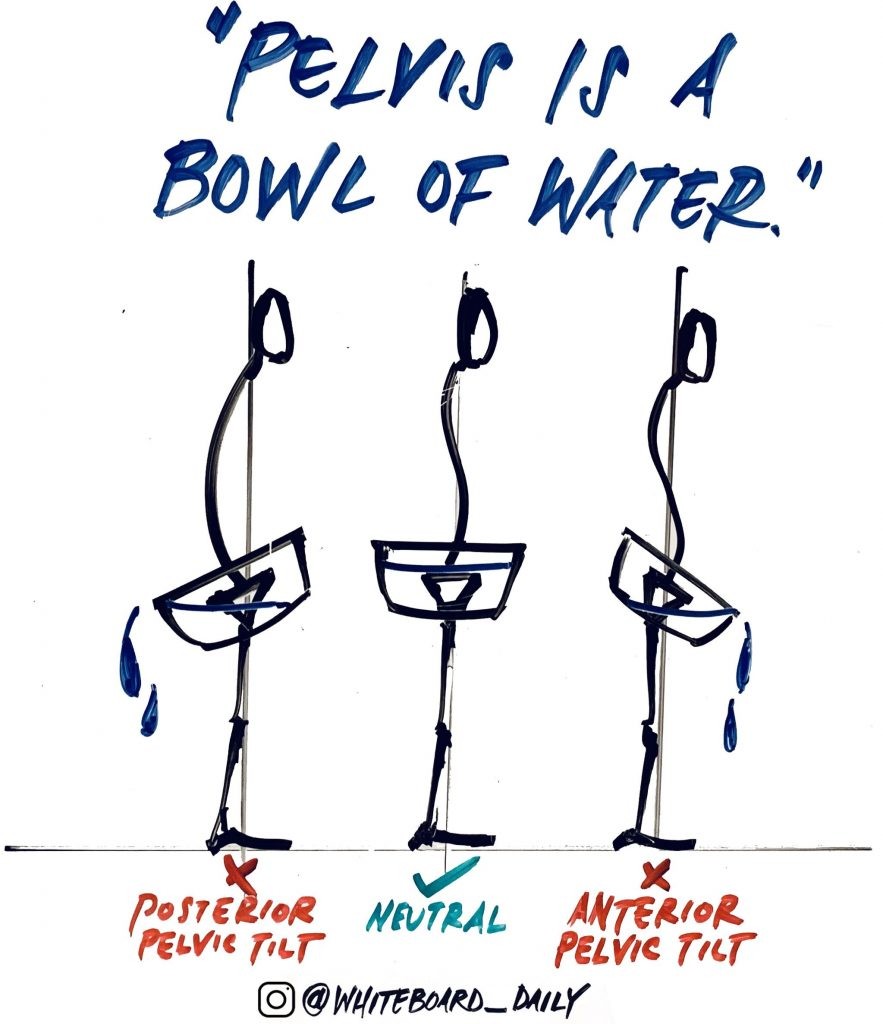Anterior Pelvic Tilt and Hip Mobility
There's no denying the importance of the hips in sports performance. The high degree of mobility at this joint allows us to sprint, cut, change direction, raise or lower our center of mass and jump with as much force as we can produce.
But before we get started on increasing the mobility or sttrength of our hips we should make sure the hips and pelvis are optimally positioned for our posture.
Sometimes the analogy of a bowl of water is used to convey the concept of the positioning of the pelvis.
When we have anterior pelvic tilt we can imagine water spilling out of the front of the bowl. The opposite is true of posterior pelvic tilt.
I'm not suggesting we should all have a neutral pelvis but instead we should be aware of our posture and how this can impact our movement.
A 2014 study (reference below) looked at how our hip mobiliy is influenced by anterior, neutral or posterior pelvic tilt.
The researchers examined the hips of 48 subjects that had surgery due to femoral acetabular impingement (FAI). The various positions of anterior pelvic tilt (10 degrees), native (no tilt) and posterior pelvic tilt (10 degrees) were analyzed in terms of hip flexion, hip internal rotation, hip adduction and the position of osseus (bony) contact (impingement).
What they found was that anterior pelvic tilt was associated with lower hip flexion (6 degrees), lower internal rotation (15 degrees), lower hip adduction (8.5 degrees) and increased contact at positions of impingement. When the subjects were positioned in posterior pelvic tilt these three ranges at the hip increased and there was decreased inpingement.
So for the following athletes this would be a concern for :
- The sprinter because speed = stride rate x stride length. Less hip flexion may result in a shorter stride.
- The hockey goalie getting into the butterfly position. A loss of 15 degrees of internal rotation will make this more difficult.
- The breaststroker in swiming. Finishing the frog kick to propel the body forward requires squeezing the legs together with adduction at the hip.
Even if your goal is not related to sports performance it doesn't hurt to be aware of your posture and alignment. Most of us will have some level of anterior pelvic tilt and that can be OK and works well with our natural lumbar arch. The goal is to be aware of it and recognize when our posture deviates too much and what to do about it.
Ross, J. R., Nepple, J. J., Philippon, M. J., Kelly, B. T., Larson, C. M., & Bedi, A. (2014). Effect of changes in pelvic tilt on range of motion to impingement and radiographic parameters of acetabular morphologic characteristics. The American journal of sports medicine, 42(10), 2402-2409.
When you subscribe to the blog, we will send you an e-mail when there are new updates on the site so you wouldn't miss them.

Comments